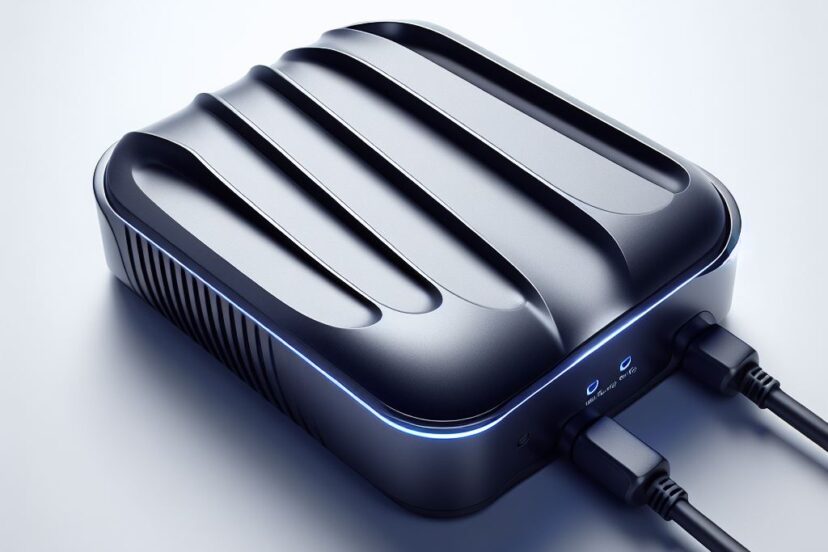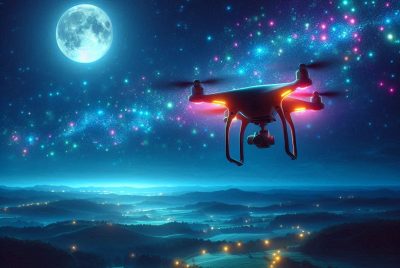Drone Charger: Maximizing Your Drone’s Power Potential
*We may earn a commission for purchases made using our links. Please see our disclosure to learn more.
Drone Charger Essentials: Choosing the Right Power Solution
When it comes to maintaining and operating drones, one essential component is the drone charger. Drones, like any other electronic devices, run on batteries that require regular charging. Over time, I’ve learned that choosing the right charger can significantly affect the performance and longevity of a drone’s battery. The market offers everything from simple USB-based chargers to sophisticated multi-battery charging stations, each designed to meet specific needs and preferences of drone enthusiasts.

My experience has taught me that quality and compatibility are critical when selecting a drone charger. Chargers tailored for drones by reputable manufacturers ensure safety features and charging efficiency. Universal chargers are convenient, allowing users to charge various batteries with different voltages and capacities. Meanwhile, dedicated chargers are optimized for specific drone models, thus providing the fastest and most efficient charge.
While exploring options, I’ve found that multi-port charging stations are beneficial for those with several batteries, as they can charge multiple cells simultaneously, saving time and hassle. Advanced chargers even come with LED indicators or digital displays that provide real-time charging status, ensuring that I’m informed about the battery’s health and charge level. Whether one is a professional drone pilot or a hobbyist, investing in the right charger is a critical decision that ensures the drone is always ready to fly.
Fundamentals of a Drone Charger

When I talk to people about maximizing drone performance, the focus often lands on drone charging. Optimizing the charging process is crucial for ensuring drone batteries are efficiently powered and ready for use.
Charging Technology
Today’s technology has transformed how I charge my drone. USB-C has become a prevalent interface due to its high-speed data transfer and fast charging capabilities. My drone’s charging system often requires a specific input voltage which is typically clearly marked on the charger or in the user manual. For rapid charging, the rated power of the charger is a key factor; fast charging rates require chargers with higher output. Wireless charging pads are a growing trend as they offer the convenience of charging without needing to physically plug in the drone or remove the batteries.
Drone Battery Basics
The most common type of battery I use is the LiPo (Lithium Polymer) batteries due to their capacity for higher power and longer flight times. These intelligent flight batteries usually incorporate built-in circuits that manage charging and discharging, helping to prolong their lifespan through balanced power distribution. Charging time for these batteries typically ranges from 60 to 90 minutes, but it’s always best to consult the manufacturer’s specifications. It’s essential to charge Lithium Polymer batteries with a charger specifically designed for them to prevent damage or reduce risks.
I make it a point to store my drone batteries in a cool, dry place after charging. Temperature extremes, particularly heat, can significantly shorten a battery’s lifespan and potentially pose safety risks.
Types of Drone Chargers

When selecting a charger for my drone, I consider compatibility, portability, functionality, and charging speed. There are several types of chargers available, each catering to different needs and scenarios.
Portable Chargers
Portable chargers are a boon for drone pilots on the go. These are often compact and lightweight, making them an easy addition to my flight kit. I especially appreciate portable chargers when flying toy drones or smaller models like the DJI Mini series. A typical portable charger allows me to charge my drone batteries using a USB connection from power banks or car chargers, providing flexibility and extended flying time while outdoors.
Two-Way Charging Hubs
Two-way charging hubs, such as those created for the DJI Mini 2 and Mavic Mini, bring efficiency to the table by allowing me to charge multiple batteries simultaneously. The DJI Mini 4 Pro/Mini 3 series two-way charging hub stands out for its smart functionality — it optimizes the charging order based on battery levels, ensuring that I get a fully charged battery as quickly as possible. These hubs double as storage solutions, keeping my batteries organized and protected.
Professional Drone Chargers
For my more advanced drones, professional chargers are the key to maintaining power levels efficiently. These are designed for higher-capacity batteries and often offer features like faster charging speeds, balanced charging (to ensure each cell is charged evenly), and multiple charging ports. Professional drone chargers usually support a variety of battery chemistries and come with advanced safety features to protect both the battery and charger during use.
Specific Drone Charger Solutions

When selecting a charging solution for a drone, it’s crucial to match the charger with the exact model to optimize battery life and charge times. I’ll detail the DJI Mini Series and DJI Mavic charging accessories, ensuring that you find the specific charger you need.
DJI Mini Series Chargers
The DJI Mini Series—encompassing models such as the DJI Mini 3 Pro, DJI Mini 2, and DJI Mini SE—has specific charging requirements.
- DJI Mini 2 SE/DJI Mini 2: These models use the same charger, which is a USB-C type. It’s essential to use the charger provided by DJI to maintain the battery health.
- DJI Mini 3 Pro: This advanced model benefits from fast charging capabilities. A dedicated 30W USB-C charger can significantly reduce charging times.
- DJI Mini SE: The charger designed for the Mini SE maximizes efficiency without sacrificing battery longevity.
DJI Mavic Charging Accessories
The DJI Mavic series, such as DJI Mavic 3, and DJI Mavic 3 Pro, have their own set of charging accessories that cater to their unique power requirements.
- DJI Mavic 3/Mavic 3 Pro:
- These drones support 65W fast charging with the right adapter, ensuring rapid power-ups and less downtime.
- Investment in a compatible charging hub can charge multiple batteries in sequence, which is ideal for extensive drone use.
The correct charging base or display base, such as the Mavic Mini Charging Base and DJI Charging Display Base, provide both functionality and visual appeal while charging your drone. For any of these drones, using the original DJI charging accessories is pivotal for maintaining the health and longevity of the batteries.
Drone Charger: Charging Performance

When discussing the charging performance of drone chargers, the primary focus is on efficiency, fast charging capabilities, and adherence to manufacturer specifications. I will cover these elements in detail below.
Fast Charging Features
Fast charging is a sought-after feature in drone accessories, allowing me to minimize downtime and get back to flying swiftly. These features typically use advanced technologies to deliver higher currents safely, significantly shortening the charging time. However, it’s essential to note that not all drones and batteries support fast charging, and using an incompatible fast charger can cause damage. For those that do, fast charging can replenish the batteries in much less time compared to standard chargers: often reducing a full charge time from several hours to under an hour.
Manufacturer Specifications
Manufacturers provide specific charging guidelines that should be followed to ensure safety and longevity of drone batteries. Charging times and currents vary based on the type and size of the battery. For instance, a standard 2200mAh LiPo battery may take about an hour to charge with its designated manufacturer charger. I always consult the manual to determine the optimal charging current (measured in Amperes) and voltage for my drone’s battery. It’s also crucial to use the manufacturer-recommended charger or a third-party charger that meets these specifications to avoid damaging the battery or the drone.
Drone Charger: Regulatory and Safety Considerations

When it comes to drone charging, it is paramount to understand and adhere to the regulatory frameworks set by authorities as well as to follow safety protocols to prevent accidents.
Compliance and Standards
I must comply with the regulations set forth by the Federal Aviation Administration (FAA) in the United States to ensure that my drone charging practices are within legal boundaries. The standards include, but are not limited to, adhering to specific voltage and current guidelines that match the drone manufacturer’s recommendations. It’s essential to regularly consult the FAA’s Advisory Circulars for up-to-date information on drone battery charging and maintenance.
- FAA guidelines: Clear and specific requirements for equipment and operation.
- Manufacturer’s recommendations: Always aligned with the safe operation and longevity of the drone’s battery.
Safety Tips for Drone Battery Charging
The safe charging of drone batteries is crucial to prevent fires and prolong the battery life. Here are precise safety tips I follow when charging my drone batteries:
Charging Location: Charge batteries in a fire-resistant area away from any flammable materials. Battery Inspection: Regularly inspect batteries for damage before charging. Charging Equipment: Use only the charger designed for my drone’s battery to prevent overcharging and overheating. Monitoring: Never leave the charging battery unattended. Storage: Store batteries in a cool, dry place and in a fireproof container when not in use.
By meticulously following these guidelines, I ensure the safety and efficiency of my drone operations.
FAQs About Your Drone Charger
In this section, I’ll address some common inquiries regarding drone battery charging to ensure you get the most out of your drone’s flight time while maintaining safety standards.
1. How can I charge my drone if I don’t have the original charger?
If the original charger is unavailable, you may use a compatible charger as long as it matches the voltage and current requirements specified for your drone battery. It is essential to ensure that the alternative charger is from a reputable manufacturer and is known to be compatible with your drone model.
2. What are the best practices for charging a drone battery safely?
For safe drone battery charging, always use the correct charger and follow the manufacturer’s guidelines. It’s best to charge the battery in a fireproof charging bag and avoid leaving the battery unattended. Overcharging should be avoided by using chargers with automatic shut-off features or setting a timer.
3. Is it possible to charge a drone with a USB cable?
Certain drone models allow USB charging, especially smaller or more portable drones. However, USB charging is typically slower and may not be suitable for larger drone batteries that require higher charging power.
4. Can I use a third-party charger for my DJI drone?
While it is possible to use a third-party charger for a DJI drone, it’s crucial to use only accessories that DJI approves for their drones to avoid potential damage. Unauthorized chargers may void warranty and pose a risk to the battery’s health.
5. How long does it typically take to fully charge a drone battery?
The time it takes to fully charge a drone battery depends on its capacity and the power output of the charger. On average, charging can take between 60 to 90 minutes for most drone batteries.
6. Are there any risks associated with charging a drone overnight?
Charging a drone overnight can pose risks such as overcharging and potential overheating. It’s advisable to charge the drone with a charger that has built-in protections against overcharging and always monitor the charging process when possible.




